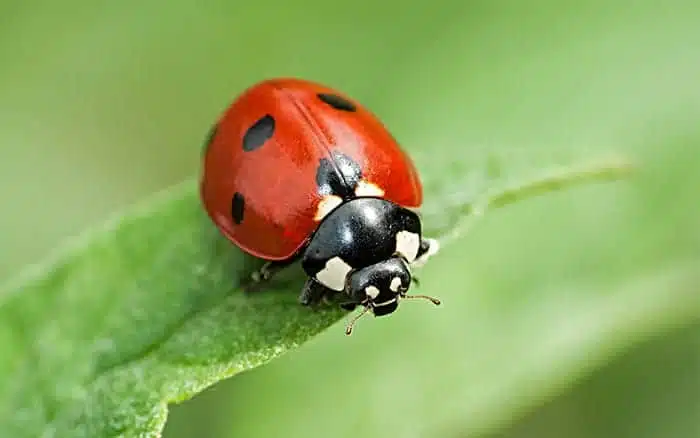Updated 6th of February 2025
Ladybirds are probably the most popular member of the beetle family in Britain. Gardeners love them because they are voracious aphid eaters, and so are their larvae. Ladybirds are so good at keeping population numbers down, that you won’t need to use pesticides.
The two-spotted and seven-spotted varieties are the most frequently seen species. Many people believe that the number of spots indicates the age of the ladybird, but this is a myth.
Why are they called ladybirds?
According to legend, the name comes from farmers in Britain. During the Middle Ages, their crops were being eaten by pests, and they prayed to ‘Our Lady,’ the Virgin Mary for help. Soon the farmers started seeing ladybirds on their crops, and the pest numbers went down.
In early paintings, Mary was often depicted wearing a red cloak, with spots like a ladybird to symbolise her seven joys and seven sorrows.
So the farmers associated these insects with the Virgin Mary and named them Lady beetle or Our Lady’s bird. In German, ladybirds are called Marienkäfer, which means Mary beetle.
How to build a ladybird hotel
Ladybirds are always looking for a safe space to lay their eggs, and the adults also hibernate over winter. They often use dead stems or old wood, but you can replicate this natural environment in your garden with a pine cone hotel.
What you will need
What to do
Cut a length of chicken wire, 50cm to 80cm long.
Make a pile of pine cones in the middle of the chicken wire. It helps to press them together so their scales lock and hold together. Alternatively, you can tie them together with some string.
Lift the edges of the chicken wire around the pine cones to make a bag.
Fold in or cut out the excess chicken wire.
Tie the top of the bag together with string.
You can hang the hotel in a sheltered spot in the garden, or place it on the ground in the flower bed. Make sure it is protected from heavy rain.
Want more ideas for insect hotels? Read my free guide to creating all different types of bug hotels!



I am going to set up a pine cone hotel on my plot. We are also setting up a wild life area on our
allotment site and its coming on great. With lots of ideas for bug houses and ways to encourage
lots of wild life to set up their little homes and hopefully introduce more insects and bugs. Which is good for
everyone and everthing living in our gardens
I have used pine cones before for Ladybirds ,but Unfortunately found vine weevils loved using then to to hide in so had to get rid of them.